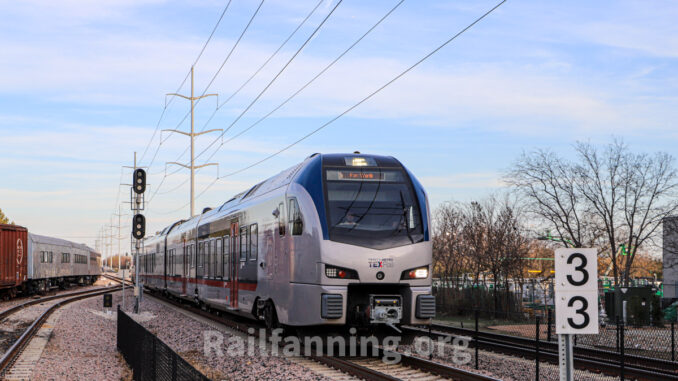
(The Center Square) – Public transit agencies that can’t find new funding or make cuts could face a fiscal cliff, according to the latest report on the sector from S&P Global Ratings.
The credit rating agency gave the public transit sector a negative outlook as challenges pile up for operators while they spend down more than $70 billion in federal aid given out during the COVID-19 pandemic.
“Some public transit operators face an operating fund fiscal cliff – especially if they are unable to identify new revenue sources or right-size operations reflecting lower expected ridership levels – once the federal assistance aid now compensating for diminished passenger fare revenues is depleted,” according to the S&P report.
In the U.S., public transit ridership peaked in 2014. That year, public agencies reported 10.7 billion unlinked passenger trips. Since that peak, unlinked passenger trips have declined nearly every year. The National Transit Database reported 9.9 billion unlinked passenger trips in 2019. When the COVID-19 pandemic hit in 2020, unlinked passenger trips plummeted to 4.7 billion, meaning ridership dropped by just over half in one year.
While ridership has recovered from the lows seen in 2020, it remains well below pre-pandemic levels. Much of the loss is the result of changes in the workplace, including many workers who go into the office less frequently. Ridership stood at about 67% of pre-pandemic levels in December 2022 and about 56% of 2014’s peak, according to S&P.
Public transit agencies rely on rider fares to pay for a portion of operational costs. With fewer people riding, less money is coming in.
“We expect public transit ridership will only recover to about 85% of pre-pandemic levels by 2026 under our base case and 80% under our downside case,” the authors wrote in the report. “Since transit ridership nationwide was experiencing year-over-year declines before the pandemic, we believe it is likely that this metric will not recover to near pre-pandemic levels for a long time, as we see slowly developing demographic trends more likely to affect that growth than public transit experiencing a sudden renaissance.”
Some transit agencies have already set about searching for new revenue sources. The Regional Transportation Authority in Illinois – which oversees the Chicago Transit Authority, Metra and Pace Suburban Bus – has proposed 11 tax and fee hikes to make up for declining fare revenue. It also proposed scrapping a state law that requires the agency to recover 50% of operating costs through fare revenue.
The S&P report said the transit agencies that depend on fares will face growing uncertainty as federal aid runs out.
“We expect providers that have looked to fare revenue to support service levels will have to make tough decisions in the near term about sustainable tax and revenue models going forward,” according to the report. “As ridership recovery remains slow, we believe the long-term credit quality of many transit operators will depend on their ability to adjust operations and align financial performance to achieve structural balance after federal aid is depleted. Even public transit systems not as dependent on fare revenues face challenges related to weak ridership levels as they balance funding sources and service level while supporting their public missions.”

